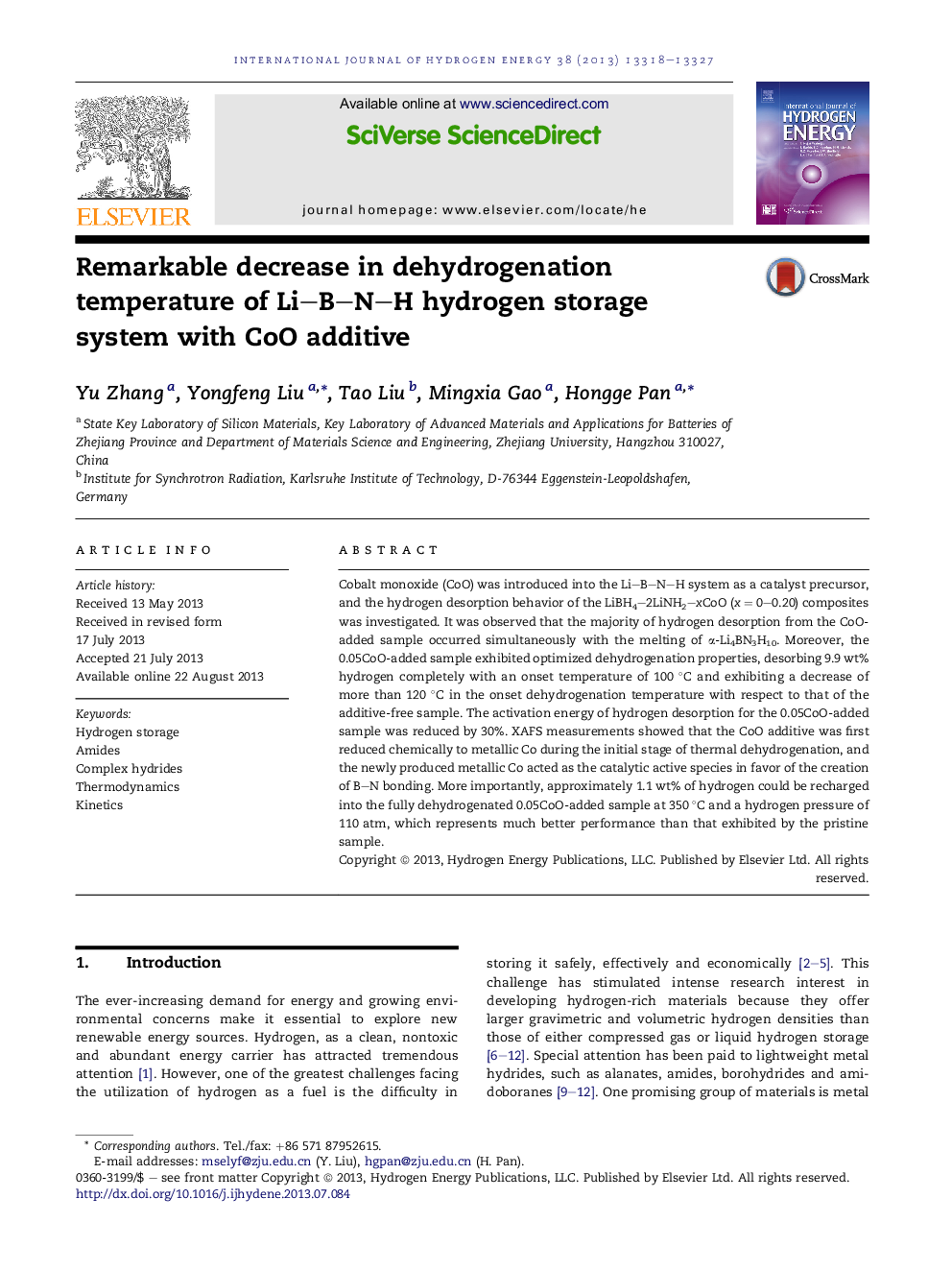| Article ID | Journal | Published Year | Pages | File Type |
|---|---|---|---|---|
| 1273337 | International Journal of Hydrogen Energy | 2013 | 10 Pages |
•CoO was first introduced into the Li–B–N–H system as a catalyst precursor.•The onset dehydrogenation temperature decreased by 120 °C after adding CoO.•Metallic Co was identified to be the active catalytic species.•CoO-added samples exhibited partial reversibility for hydrogen storage.
Cobalt monoxide (CoO) was introduced into the Li–B–N–H system as a catalyst precursor, and the hydrogen desorption behavior of the LiBH4–2LiNH2–xCoO (x = 0–0.20) composites was investigated. It was observed that the majority of hydrogen desorption from the CoO-added sample occurred simultaneously with the melting of α-Li4BN3H10. Moreover, the 0.05CoO-added sample exhibited optimized dehydrogenation properties, desorbing 9.9 wt% hydrogen completely with an onset temperature of 100 °C and exhibiting a decrease of more than 120 °C in the onset dehydrogenation temperature with respect to that of the additive-free sample. The activation energy of hydrogen desorption for the 0.05CoO-added sample was reduced by 30%. XAFS measurements showed that the CoO additive was first reduced chemically to metallic Co during the initial stage of thermal dehydrogenation, and the newly produced metallic Co acted as the catalytic active species in favor of the creation of B–N bonding. More importantly, approximately 1.1 wt% of hydrogen could be recharged into the fully dehydrogenated 0.05CoO-added sample at 350 °C and a hydrogen pressure of 110 atm, which represents much better performance than that exhibited by the pristine sample.
